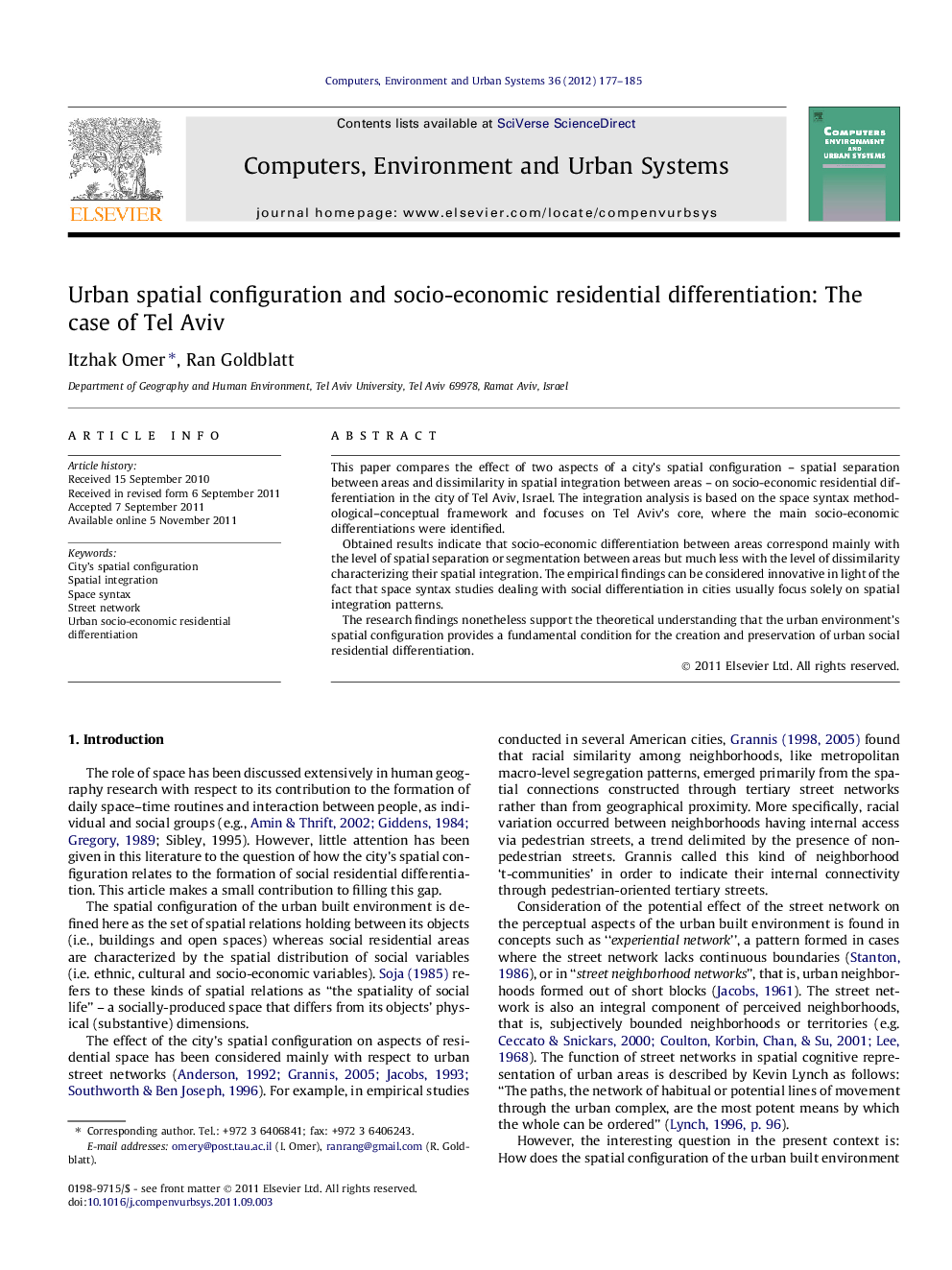| Article ID | Journal | Published Year | Pages | File Type |
|---|---|---|---|---|
| 506441 | Computers, Environment and Urban Systems | 2012 | 9 Pages |
This paper compares the effect of two aspects of a city’s spatial configuration – spatial separation between areas and dissimilarity in spatial integration between areas – on socio-economic residential differentiation in the city of Tel Aviv, Israel. The integration analysis is based on the space syntax methodological–conceptual framework and focuses on Tel Aviv’s core, where the main socio-economic differentiations were identified.Obtained results indicate that socio-economic differentiation between areas correspond mainly with the level of spatial separation or segmentation between areas but much less with the level of dissimilarity characterizing their spatial integration. The empirical findings can be considered innovative in light of the fact that space syntax studies dealing with social differentiation in cities usually focus solely on spatial integration patterns.The research findings nonetheless support the theoretical understanding that the urban environment’s spatial configuration provides a fundamental condition for the creation and preservation of urban social residential differentiation.
► We examine the effect of a city’s spatial configuration on social residential differentiation. ► We compare the effect of spatial separation and dissimilarity in spatial integration between areas. ► Social differentiation corresponds mainly with the level of spatial separation between areas.
